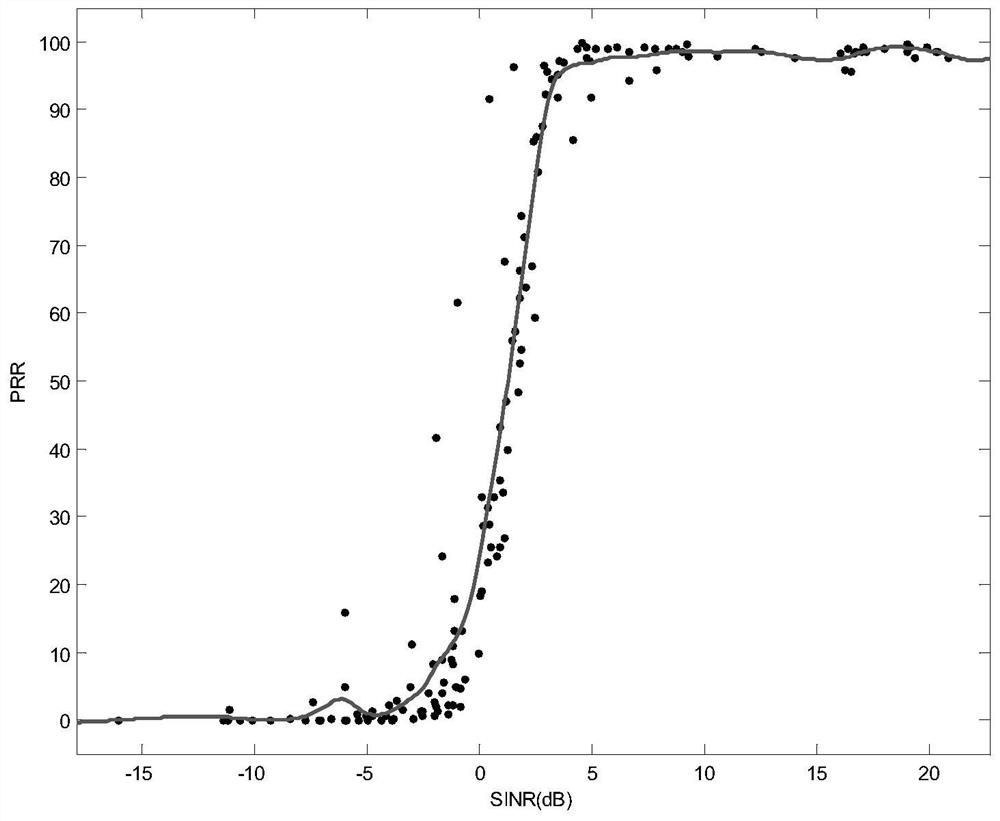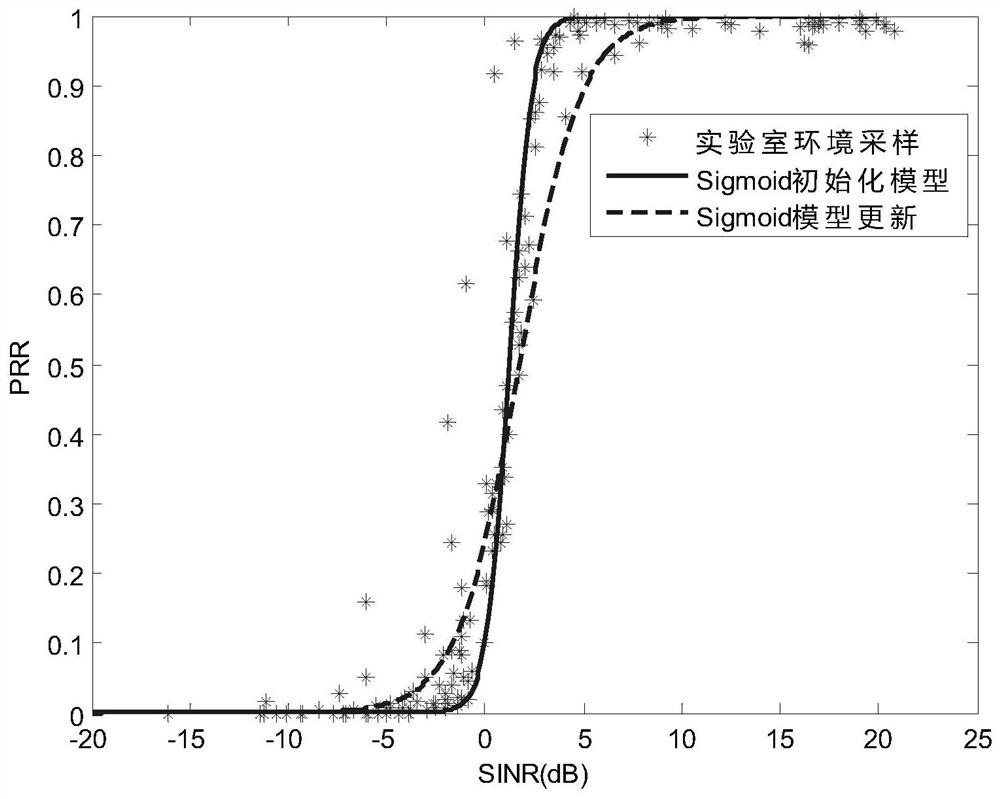A sigmoid-based interference model estimation method for wireless sensor networks
A technology of wireless sensors and interference models, applied in transmission monitoring, transmission systems, electrical components, etc., can solve problems such as difficult implementation of sensor nodes
- Summary
- Abstract
- Description
- Claims
- Application Information
AI Technical Summary
Problems solved by technology
Method used
Image
Examples
Embodiment Construction
[0037] The invention is applied to the wireless sensor network. In the interference model of the sensor node, there is a transition area, and in this area, as the SINR increases, the PRR takes a value in the range of 0 to 100%. The transition region reflects the fluctuation of reception rate in the presence of interference. When the SINR meets certain requirements, the receiving node can obtain a higher receiving rate. The main goal of determining the interference model is the fitting of the transition area and the requirement for SINR when a stable receiving rate is to be obtained.
[0038] Such as figure 1 Shown, a kind of wireless sensor network interference model estimation method based on Sigmoid function is characterized in that, comprises the following steps:
[0039] Step 1. Based on the standard Sigmoid function model, introduce the stretch coefficient and translation coefficient to construct the interference model. Each node initializes the stretch coefficient and ...
PUM
 Login to View More
Login to View More Abstract
Description
Claims
Application Information
 Login to View More
Login to View More - R&D
- Intellectual Property
- Life Sciences
- Materials
- Tech Scout
- Unparalleled Data Quality
- Higher Quality Content
- 60% Fewer Hallucinations
Browse by: Latest US Patents, China's latest patents, Technical Efficacy Thesaurus, Application Domain, Technology Topic, Popular Technical Reports.
© 2025 PatSnap. All rights reserved.Legal|Privacy policy|Modern Slavery Act Transparency Statement|Sitemap|About US| Contact US: help@patsnap.com



